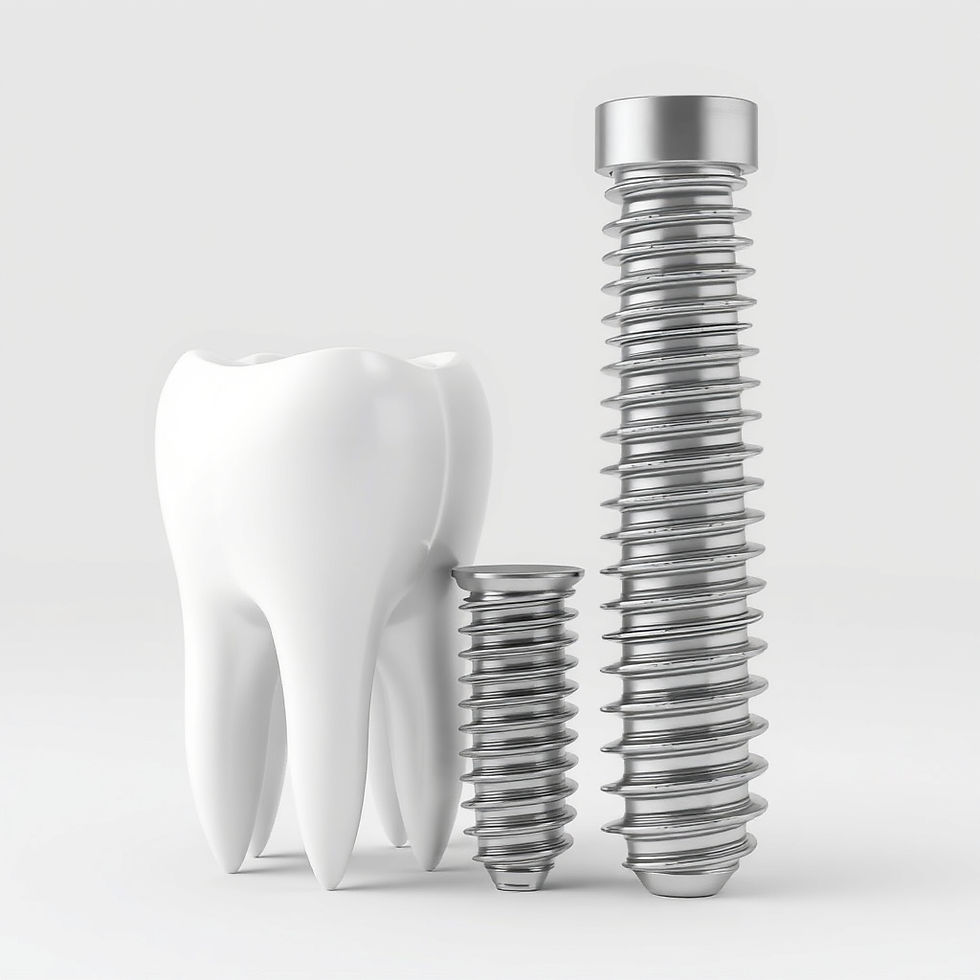Are Teeth Bones?
- plurefy com
- Sep 11
- 4 min read

Introduction
If you’ve ever wondered whether teeth are bones, you’re not alone. It’s one of the most common questions people ask about the human body. At first glance, teeth and bones seem almost identical—both are hard, white structures that provide support and strength. Bones hold up your body, while teeth help you chew food and speak clearly. But here’s the surprising truth: teeth are not bones.
While they share some similarities, teeth are unique structures with their own composition, growth patterns, and functions. Understanding how they differ can help you take better care of both your teeth and bones. In this comprehensive guide, we’ll break down the science, compare their similarities, and explore why it matters for your health.
Chapter 1: The Basics — What Are Teeth and Bones?
What Are Bones?
Bones are living tissues that make up your skeletal system. They:
Provide structure and support.
Store minerals like calcium and phosphorus.
Protect vital organs.
Produce blood cells in the bone marrow.
Continuously regenerate throughout life.
Bones are about 50% water and 50% protein-mineral matrix (mostly collagen and calcium phosphate).
What Are Teeth?
Teeth, on the other hand, are specialized calcified structures embedded in your jaw. They:
Help you chew and break down food.
Play a role in speech and pronunciation.
Maintain the shape of your face.
Unlike bones, teeth don’t contain bone marrow or regenerate once damaged. Instead, they’re made up of layers of hard and soft tissue.
Chapter 2: The Structure of Teeth vs. Bones
Layers of a Tooth
A tooth is more complex than it looks. It has three main layers:
Enamel – The hardest substance in the human body, made mostly of hydroxyapatite (a form of calcium phosphate).
Dentin – A yellowish layer under the enamel that supports it and makes up most of the tooth’s structure.
Pulp – The innermost part, containing blood vessels, connective tissue, and nerves.
Teeth are anchored into the jawbone by the periodontal ligament and cementum.
Structure of Bones
Bones have two main types of tissue:
Cortical (compact) bone – Dense and strong, found on the outer layer.
Trabecular (spongy) bone – Lightweight, porous, and located inside bones.
Inside most bones is bone marrow, which produces red and white blood cells.
Key Difference
Teeth are harder than bones (thanks to enamel).
Bones are living tissue that heal and grow, while teeth cannot regenerate enamel once it’s lost.
Chapter 3: Similarities Between Teeth and Bones
Even though they aren’t the same, teeth and bones share some characteristics:
Calcium-based: Both rely on calcium phosphate for strength.
Supportive functions: Bones support the body, while teeth support chewing and speech.
Protective roles: Bones protect organs; enamel protects dentin and pulp.
Sensitivity to diet: Both require nutrients like calcium and vitamin D for health.
This explains why many people assume teeth are bones.
Chapter 4: Major Differences Between Teeth and Bones
Here’s a quick breakdown:
Feature | Teeth | Bones |
Composition | Enamel, dentin, pulp | Collagen, calcium phosphate, marrow |
Hardness | Hardest substance in body (enamel) | Hard but softer than enamel |
Regeneration | Cannot repair enamel naturally | Constantly remodel and heal |
Blood supply | Limited to pulp | Extensive blood vessels throughout |
Function | Chewing, speech, aesthetics | Support, protection, mineral storage |
Growth | Do not continue growing after eruption | Can grow and change throughout life |
Chapter 5: Why Teeth Are Not Bones
There are three main reasons:
Teeth lack bone marrow. Unlike bones, they don’t produce blood cells.
Teeth don’t regenerate enamel. Once enamel is gone, it’s gone.
Different development origins. Teeth develop from ectoderm and mesoderm layers of embryonic tissue, while bones develop from mesoderm.
Chapter 6: The Role of Teeth in Human Health
Teeth are not just for chewing. They:
Aid digestion by breaking down food into manageable pieces.
Support clear speech by shaping sounds.
Affect appearance since missing teeth can change facial structure.
Indicate overall health — tooth loss, decay, or gum disease often reflect systemic health problems.
Chapter 7: How Teeth and Bones Work Together
Even though they’re different, teeth and bones are closely linked. Teeth sit in the alveolar bone of the jaw. When teeth are lost, that bone can shrink, leading to changes in facial structure. Likewise, osteoporosis (bone weakness) can impact dental stability.
Chapter 8: Common Misconceptions
“Teeth are bones.” False—teeth don’t regenerate or contain marrow.
“Calcium alone keeps teeth healthy.” Partly true—fluoride and oral hygiene are equally important.
“Baby teeth don’t matter.” False—they set the foundation for permanent teeth alignment.
Chapter 9: Taking Care of Teeth and Bones
Since both rely on minerals and good care, here are tips:
For Teeth:
Brush twice a day with fluoride toothpaste.
Floss daily.
Limit sugary foods and acidic drinks.
Visit a dentist regularly.
For Bones:
Eat calcium- and vitamin D-rich foods.
Exercise regularly (especially weight-bearing activities).
Avoid smoking and excessive alcohol.
Chapter 10: Advances in Dental and Bone Science
Modern research is exploring ways to:
Regrow enamel using stem cells and biomaterials.
3D-print teeth and bones for replacements.
Bone grafting to support dental implants.
Regenerative dentistry to mimic natural healing.
These advances may one day blur the line between teeth and bones even further.
Conclusion
So, are teeth bones? No—they’re different structures, with unique functions and properties. Teeth may look like bones, and they share similarities in strength and mineral content, but their composition, ability to regenerate, and biological roles set them apart.
What matters most is caring for both. Strong bones support your body, and healthy teeth allow you to eat, speak, and smile with confidence. Together, they form the foundation of your health and quality of life.










Comments